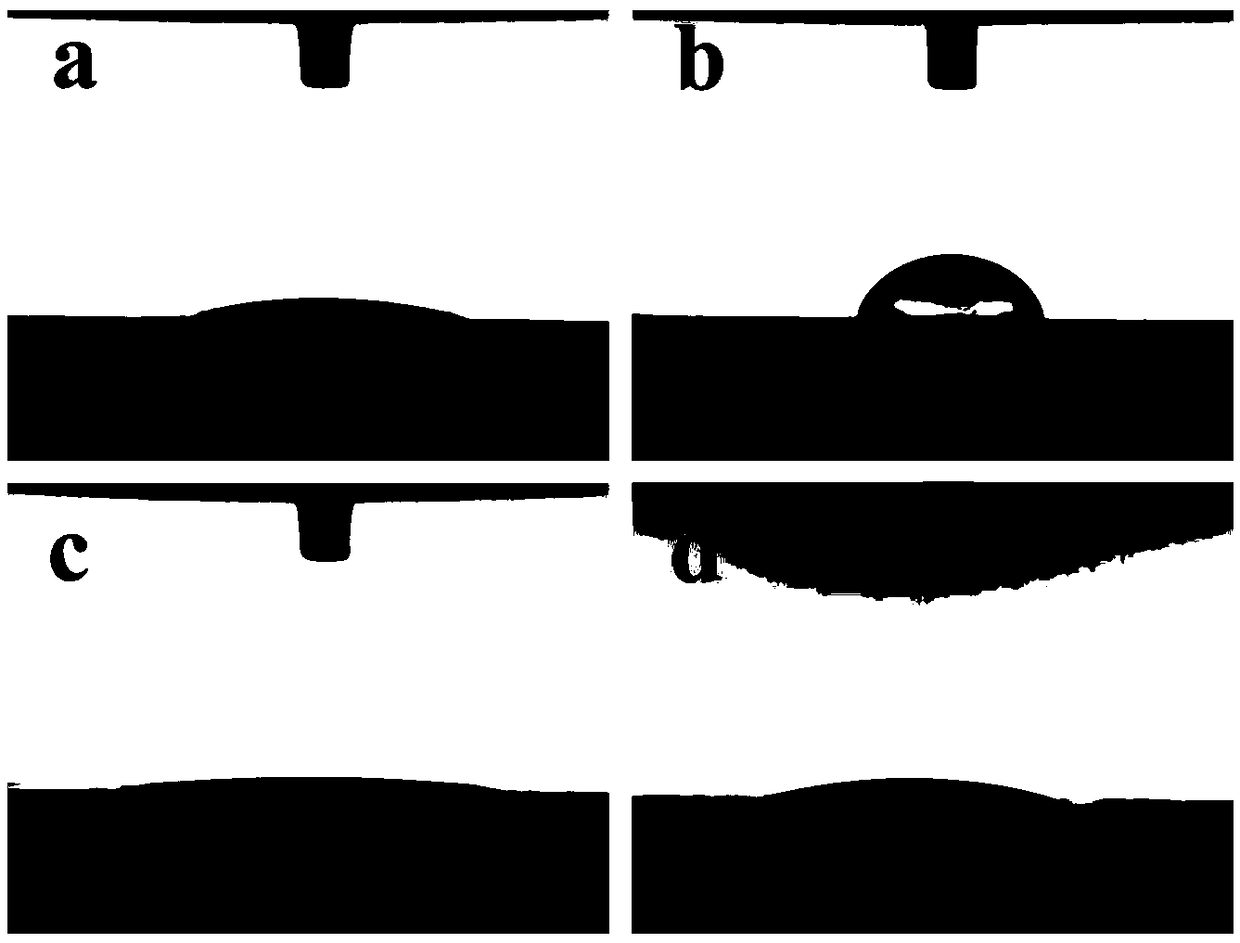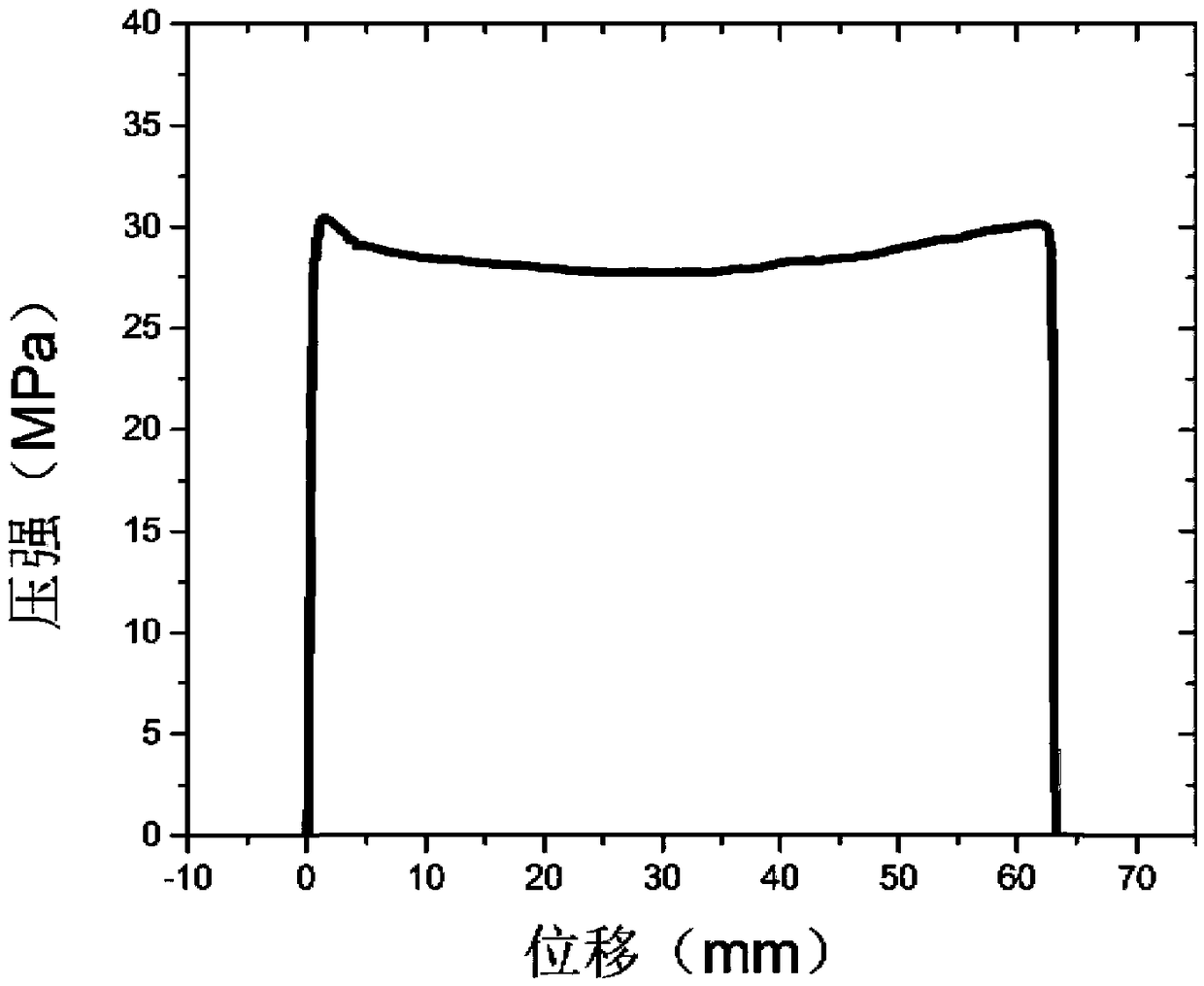High-temperature-resistant polymer modified ceramic diaphragm and application thereof
A high-temperature-resistant polymer and ceramic diaphragm technology, applied in the field of electrochemistry, can solve the problems of poor affinity polyolefin film, reduced mechanical properties of the diaphragm, and inability to quickly absorb electrolyte, etc.
- Summary
- Abstract
- Description
- Claims
- Application Information
AI Technical Summary
Problems solved by technology
Method used
Image
Examples
Embodiment 1
[0055] Prepare the ceramic diaphragm:
[0056] 95 parts by mass of aluminum oxide inorganic powder with a particle diameter of about 300nm, 3 parts by mass of styrene-butadiene rubber, 2 parts by mass of sodium carboxymethyl cellulose, and the second solvent is a water / ethanol mixture with a volume ratio of 1:1 , prepared into a ceramic slurry with a solid content of 10%, coated on the surface of a single-layer commercial polyethylene (PE) diaphragm, and dried to remove the second solvent to obtain an aluminum oxide ceramic diaphragm.
[0057] Preparation of high temperature resistant polymer modified ceramic diaphragm:
[0058] Use the first solvent to prepare pyrrole monomer with a mass fraction of 0.1% and FeCl with a mass fraction of 0.05% 3 mixed solution, the first solvent is H with a volume ratio of 1:2 2 O / ethanol mixture. Soak the aluminum oxide ceramic diaphragm in the mixed solution for 6 hours, wash and dry to remove the first solvent, and obtain a high-temperat...
Embodiment 2
[0060] Prepare the ceramic diaphragm:
[0061] 90 parts by mass of silicon dioxide inorganic powder with a particle diameter of about 500nm, 5 parts by mass of gelatin, 5 parts by mass of polyvinyl alcohol, and the second solvent is a water / isopropanol mixed solution with a volume ratio of 1:2 to prepare a solid The ceramic slurry with a content of 15% is coated on the surface of a single layer of a commercial polypropylene (PE) diaphragm, and dried to remove the second solvent to obtain a silicon dioxide ceramic diaphragm.
[0062] Preparation of high temperature resistant polymer modified ceramic diaphragm:
[0063] The first solvent preparation mass fraction is the mixed solution of the aniline monomer of 2% and the ammonium persulfate of mass fraction 1.5%, and the first solvent is the H of volume ratio 1: 3 2 O / isopropanol mixture. The above-mentioned mixed solution was coated on the surface of the above-mentioned silica ceramic diaphragm single layer, left to age for 8...
Embodiment 3
[0065] Prepare the ceramic diaphragm:
[0066]92 parts by mass of magnesium oxide inorganic powder with a particle diameter of about 600nm, 5 parts by mass of sodium methylcellulose, 3 parts by mass of styrene-butadiene rubber, and the second solvent is a water / acetone mixed solution with a volume ratio of 2:3, and is formulated into The ceramic slurry with a solid content of 12% is coated on the surface of a single-layer commercial polypropylene diaphragm, and dried to remove the second solvent to obtain a magnesium oxide ceramic diaphragm.
[0067] Preparation of high temperature resistant polymer modified ceramic diaphragm:
[0068] Prepare a mixed solution of 5% thiophene monomer and 1.5% hydrogen peroxide with a mass fraction of the first solvent, and the first solvent is H at a volume ratio of 1:3. 2 O / acetone mixture. The above-mentioned mixed solution is coated on the double-layer surface of the above-mentioned magnesia ceramic diaphragm, left to age for 12 hours, wa...
PUM
| Property | Measurement | Unit |
|---|---|---|
| particle diameter | aaaaa | aaaaa |
| thickness | aaaaa | aaaaa |
Abstract
Description
Claims
Application Information
 Login to View More
Login to View More - R&D
- Intellectual Property
- Life Sciences
- Materials
- Tech Scout
- Unparalleled Data Quality
- Higher Quality Content
- 60% Fewer Hallucinations
Browse by: Latest US Patents, China's latest patents, Technical Efficacy Thesaurus, Application Domain, Technology Topic, Popular Technical Reports.
© 2025 PatSnap. All rights reserved.Legal|Privacy policy|Modern Slavery Act Transparency Statement|Sitemap|About US| Contact US: help@patsnap.com



